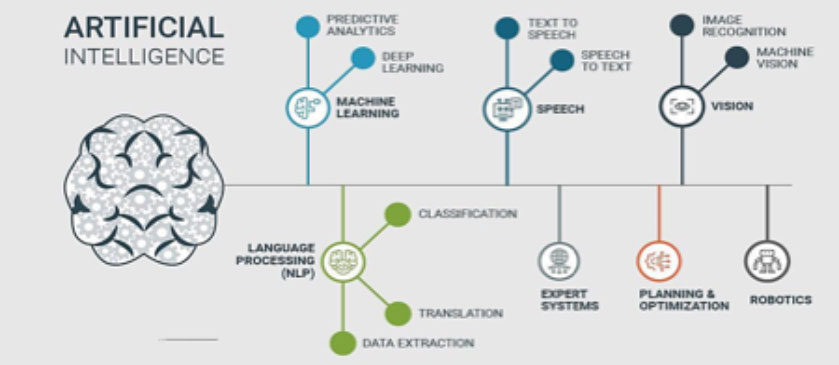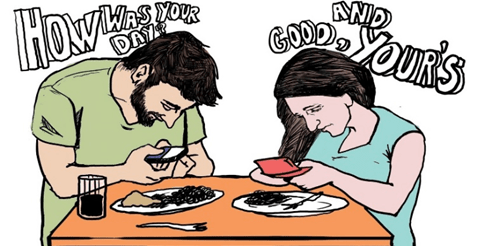Introduction
Technology (“science of craft”, from Greek, techne, “art, skill, cunning of hand”; and – logia, the collection of techniques, skills, methods, and processes) used in the production of goods or services or in the accomplishment of objectives, such as scientific investigation.
Developments in historic times, including the printing press, the telephone, and the Internet, have lessened physical barriers to communication and allowed humans to interact freely on a global scale.
Innovations have always influenced the values of a society and raised new questions of the ethics of technology. Examples include the rise of the notion of efficiency in terms of human productivity, and the challenges of bioethics. Technology has helped develop more advanced economies, however, it comes with its massive negative effects as well which are on the rise day after day.
Here Are 22 Positive Effects Of Technology
1. Effective Transportation
Anything with wheels or wings would’ve seemed like science fiction to early civilizations, and the prospect of simply climbing into something with an engine and being able to travel anywhere in the world? That would’ve been absolutely unthinkable.
2. Fast, Far-Flung Communication
It should come as no surprise that technology has vastly improved both the method and speed of communication .This kind of convenience and open-access communication has allowed everyone in the world to connect, correspond and collaborate on a global scale.
3. Better Goods and Services
Businesses that want to succeed in the 21st century must keep a constant eye on consumer satisfaction, and in turn, this means better products, improved services and enriched business-to-customer relations.
4. Streamlined Systems
Machines have made all the difference in how we perceive time and efficiency, especially in high-tech industries where streaming data is the norm and the Internet is the foundation of business. The automation of processing allows everyone to sit back and let machines do all the work.
5. Meaningful Exchanges
The more you interact with someone, the more you understand them, and the more cultural barriers cease to exist. Positive, meaningful communication is shared. The U.S. government has already sent shuttles into space with greetings to other life forms who may be out there.
6. Healthier Lives
The average life expectantly has climbed by 50 years since the 1700s. Advancements in medical tech are mostly to thank for this, though you can also point to everything from better schools to improved agricultural systems.
7. Improved Media
No industry has been untouched or unshaped by the media .Satellite systems revolutionized the way people share information. For the first time, citizens could see and hear global events for themselves.
8. Technology in teaching
Instructors/teachers don’t just experiment with different ways of using technology; they focus on using technology to reach educational goals more effectively and efficiently.
9. Get everything at a click
Applications for food delivery, transport services etc. help us to avail services from the comfort of our home .These applications have live tracking to give us minute to minute update on where we are/where our order is.
10. Sending and receiving cash
With the advent and advancement, there are easier money exchanges and transfers. Bank to bank transfers as well as intra – bank transfers in and out of a country can happen within a day.
11. GPS
GPS is the Global Positioning System which is developed and managed by the US defense. We can easily locate where we are or the place that we want to go to using GPS. Statistics indicate that 85 percent of the smartphone users around the world actively use GPS.
12. Surveillance
It is used by organizations as well as by the government for intelligence gathering, Prevention of crimes, the protection of a process, person, group, and object or for the investigation of a crime. The different methods of surveillance are biometric, CCTV, social network analysis, data mining and profiling etc.
13. Usage in forensics
Technology plays an immense role in the field of forensics as measurements include analysis of evidence, fingerprint detection, DNA identification, analyzing drugs or chemicals and dealing with body fluids.
14. Cloud computing
It is a practice of using a network of remote servers hosted on the internet to store, manage and process data rather than a local server or a personal computer. The advantages include 24*7 availability, flexible capacity, enhanced collaboration, security, easy access and control of all files, data and documents.
15. Assistive Technology Devices
Assistive Technology Device is any item, piece of equipment or product system used to increase, maintain or improve the functional capabilities of children with disabilities. Devices include Mobility aids like wheelchairs, walkers, crutches etc., hearing aids, voice recognition technology, adaptive switches and utensils etc.
16. Space Technology
It includes spaces crafts, satellites, support infrastructure, equipment and procedures. Space technology has many services like weather, forecasting, remote sensing, GPS system, satellite TV’s.
17. Entertainment
Technology is used for purpose of spending the leisure time. We are able to watch educational videos, historical documentaries as well as Quran recitations and Bayan .We can watch live forecasts of sports as well as other documentaries from the comfort of home itself
18. Artificial intelligence
AI (artificial intelligence) is the simulation of human intelligence processes by machines, especially computer systems. These processes include learning (the acquisition of information and rules for using the information), reasoning (using rules to reach approximate or definite conclusions) and self-correction.

19. IoT
The Internet of Things, or IoT, is a system of interrelated computing devices, mechanical and digital machines, objects, animals or people that are provided with Unique Identifiers (UIDs) and the ability to transfer data over a network without requiring human-to-human or human-to-computer interaction.
20. Blockchain technology
A blockchain, originally block chain, is a growing list of records, called blocks, which are linked using cryptography
- Cryptocurrencies
- Most cryptocurrencies use blockchain technology to record transactions. For example, the bitcoin network and Ethereum network are blockchain-based.
- Smart contracts
- Blockchain-based smart contracts are proposed contracts that could be partially or fully executed or enforced without human interaction
- Banks
- Major portions of the financial industry are implementing distributed ledgers for use in banking
- Banks are interested in this technology because it has potential to speed up back office settlement systems.
21. Big data
Big data is often characterized by the 3Vs: the extreme volume of data, the wide variety of data types and the velocity at which the data must be processed.
Overtime other V’s have been added to description of big data:
Veracity – the degree to which big data can be trusted.
Value- the business value of the data collected
Variability- the ways in which big data can be used and formatted.

22. Robotics
It is a branch of engineering that involves the conception, design, manufacture, and operation of robots
Robots eliminate dangerous jobs for humans because they are capable of working in hazardous environments. They can handle lifting heavy loads, toxic substances, and repetitive tasks.
Here Are 27 Negative Effects Of Technology
1. Isolation
Social isolation is characterized by a lack of contact with other people in normal daily living, such as, the workplace, with friends and in social activities. We isolate ourselves by walking around in our own little world, listening to our iPods or staring at the screen of the latest mobile device even when we are around other people.
2. Lack of Social Skills
The use of online social media outlets causes us to meet face-to-face with much less frequency resulting in a lack of much needed social skills. We lose the ability to read body language and social cues in other people. We are unable to interact freely or have the patience to carry on conversations with people around us.
3. Obesity
The more time people are spending engrossed in video games, talking to friends online and watching funny videos on YouTube, they are spending less time being active or exercising. Also the likelihood of mindlessly eating unhealthy food increases as people are hypnotized by their binge watching craze.
4. Depression
Technology creates the perfect recipe for depression with the lack of human contact, overeating and lack of exercise. There is a reason the use of antidepressants are on the rise and the blame can’t be completely dumped on the pharmaceutical companies.
5. Poor Sleep Habits
Some of the negative effects of technology can be linked to the effect it has on sleep habits. We get sucked into online activities that keep us up too late and the constant stream of information can make it difficult to turn off our brains. The ambient glow from screens can affect the release of melatonin, the sleep chemical.
6. Pollution
With the rapid-changing world of electronics and technology, the turnover rate for upgrades is staggering. This constant stream of out with the old, in with the new is adding to the levels of toxicity in our air and land. E-waste is not always disposed of properly, causing deadly chemicals to leach into the ground.
7. Increased Bullying
The use of technology has caused an increase in bullying and escalated the degree of severity. Bullies infiltrate the security of their victim’s homes through online avenues. People are more likely to say things online that they wouldn’t say in person. The increase in cyber-bullying has also led to an increase in teen suicides.
8. Lack of Privacy
The internet has stripped the world of privacy. For those with more sinister intentions, the use of phishing, viruses and hacking helps to find any information they wish to obtain. Plus, people have no sense of privacy online. They don’t think twice about tweeting every move they make, freely giving out their location on Google Map and putting their entire life story on Facebook.
9. Higher Level of Deceit
On the flip side of having no privacy, people use the internet to deceive others. By creating a few false profiles, people are able to pretend to be whomever they want. People are being “cat fished” on dating sites. You could be talking to someone on the FBI’s top ten most wanted list and not realize it until you see them getting arrested on the news.
10. Warped Sense of Reality
Using the internet as an escape from real life is very easy to do. In real life you only speak to a few people each day, however, online you are a freaking rock star! You have enough “friends” to form a small country. Unfortunately we must live in the real world whether we like it or not.
11. Stress
Constantly being “plugged in” and “connected” causes an extra layer of stress that wasn’t present before the overuse of technology.
12. Blackberry/iPhone Thumb
Tendonitis in the thumb, a.k.a. Blackberry/iPhone Thumb, is a form of repetitive strain injury caused by the frequent use of thumbs to press buttons on mobile devices. The same injury can also be
obtained from playing too many video games.
13. Lack of Sexual Boundaries
Exposure to sexual content is more likely to happen at a much younger age. Sexting is also a concern with technology being used at such a young age. There is no way in hell a girl or a boy would have taken a nude photo of herself/himself and passed it on social media before the popularity of sexting.
14. Lack of Social Bonds
Creating a lasting bond with other people requires face-to-face interaction. The more we isolate ourselves with technology the fewer bonds we will form.Younger people prefer communicating online versus face-to-face. When people are in the same room and communicating via text or instant messaging instead of speaking to each other, there’s a problem.

15. Constant Distraction
When we are focused on a device instead of what’s going on around us we miss a great deal. Think of the number of times you have been texting or talking to a friend and missed the opportunity to flirt with the hot guy standing beside you. There is also a rise in the number of injuries incurred by people texting while walking.
16. Neck and Head Pain
Constantly looking down at devices can cause neck pain and over time will cause the neck to lose its natural curve. Eyestrain can also cause headaches, blurred vision and migraines.
17. Shortened Attention Span
The use of social media has shortened our attention span from 12 minutes to 5 minutes. Constant news feeds, getting information in 140 characters and videos that are 10 minutes or less has literally rewired our brains. People who are online an average of 5 hours a day have trouble remembering people’s names, forget pots on the stove and even their own birthday.
18. Addiction
People are not only dependent on technology they are also addicted to it. Studies have shown that when cell phones are taken away subjects heard or felt fathom vibrations, continuously reached for phones that weren’t there and became fidgety and restless. These are some of the same withdrawal symptoms you would expect from doing drugs.
19. Lack of Empathy
The constant stream of violent scenes on video games, TV, movies and YouTube causes people to become desensitized to destruction of any kind. The normalizing of bad things happening and the culture of narcissism created by social media creates a society of people who lack empathy. When people stop caring, the world goes to hell in a hand basket.
20. More Violence
After people lose empathy and are accustomed to violence, it becomes the social norm. Teenage girls are videoing themselves violently beating another girl; the number of school shootings are rising and videos of people attacking homeless people are a few examples of violent behavior caused by media.
21. Higher Energy Consumption
Although individual devices are becoming more energy efficient, the increased overall use is causing a higher consumption of energy. People don’t turn their devices off; they keep computers on or plugged in, mobile devices charging and televisions plugged in. Also manufacturing all of these high tech toys causes an increase in greenhouse gas emissions.
22. Developmental Issues in Children
Children are using more technology now than they have ever used in the past. All of the negative effects that social media and television is having on adults are far greater when it comes to the developing minds of children. There is no way to know what long term effect technology will have on our children because this is the first generation to have unlimited access.
23. Neurosis
Technology causes people to suffer from mental and emotional disturbances, such as anxiety, phobias and delusions, which are all symptoms of neurosis. Being convinced you’re very ill after looking up strange diseases on WebMD or thinking you are famous because you have had a viral video are a couple of ways technology neurosis manifests itself.
24. Loss of Hearing and Eyesight
Using headphones and ear buds can cause people to lose their hearing over time. Likewise, straining your eyes looking at computer and device screens can cause people to need glasses much earlier in life.
25. Phubbing
Phubbing is a term created by the combination of the words phone and snubbing. It refers to a person interacting with their phone (or other device) rather than interacting with a human being. The use of this, and other terms around mobile device use, showcases a growing issue with different kinds of technology.
26. Impact of radio waves on birds
Birds have long been thought to navigate using light and Earth’s magnetic field. In a long and careful experiment, German scientists found that migrating robins became disorientated when exposed to electromagnetic fields at levels far lower than the safety threshold for humans. The frequencies were in the medium-wave band used by AM radio.
Be more mindful of the time you spend using technology. If you have longer conversations with Siri than you do with real people, it’s probably time to put the phone down. Force yourself to have an electronic-free day or weekend.
27. Negative impact of the 5G networks
5G is the fifth generation of cellular mobile communications. It succeeds the 4G, 3G and 2G systems. 5G performance targets high data rate, reduced latency, energy saving, cost reduction, higher system capacity, and massive device connectivity. Experts believe the new 5G cell towers are more dangerous than other towers, causing a whole new host of health problems for everyone. Thousands of studies link low-level wireless radio frequency radiation exposures to a long list of adverse biological effects, including:
- DNA single and double strand breaks
- oxidative damage
- disruption of cell metabolism
- increased blood brain barrier permeability
- melatonin reduction
- disruption to brain glucose metabolism
- generation of stress proteins
Sadia Bushra Akhtar
Corporate Trainer
LEARN Maximum/Wisdom Collabrative.
